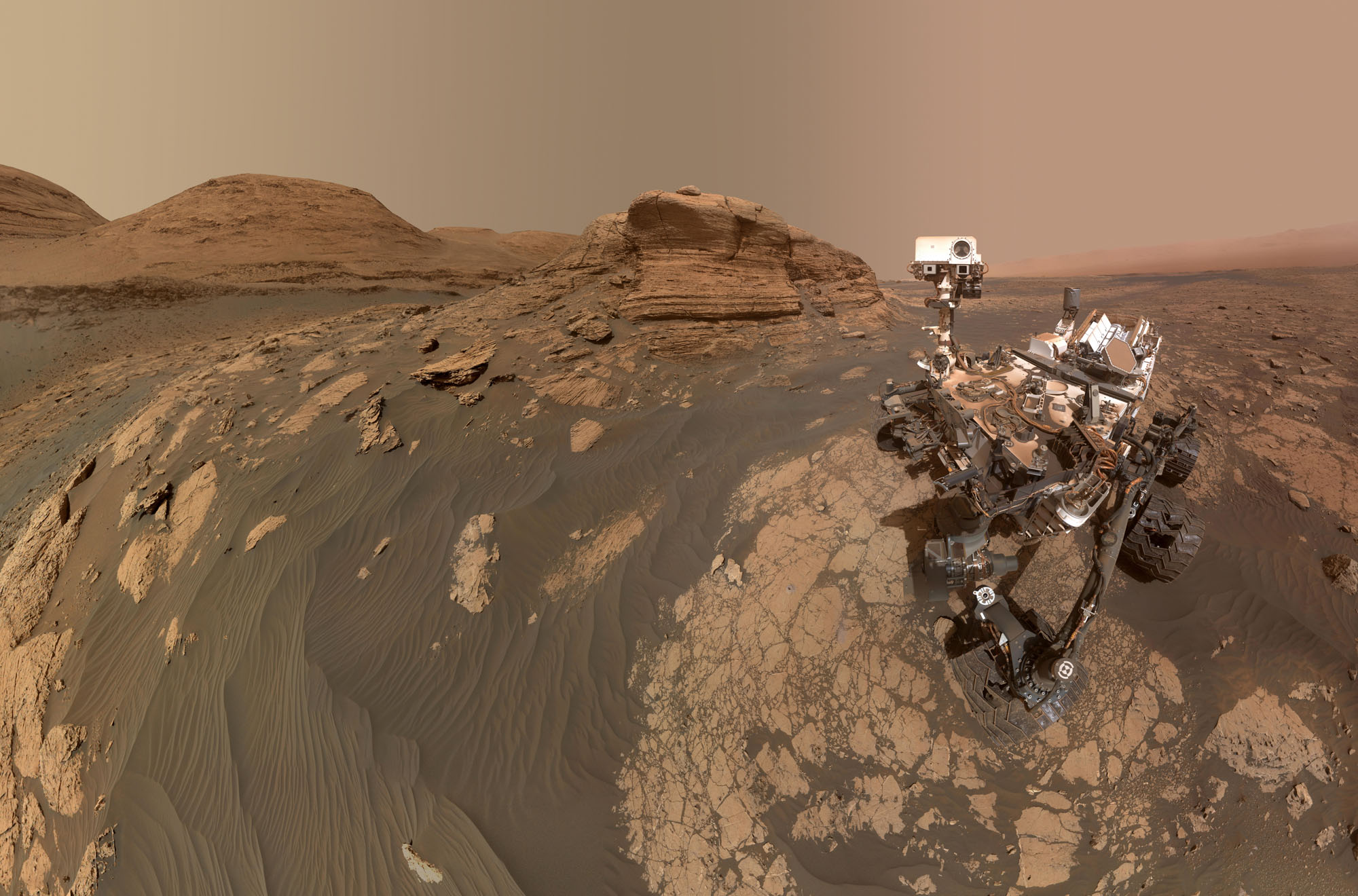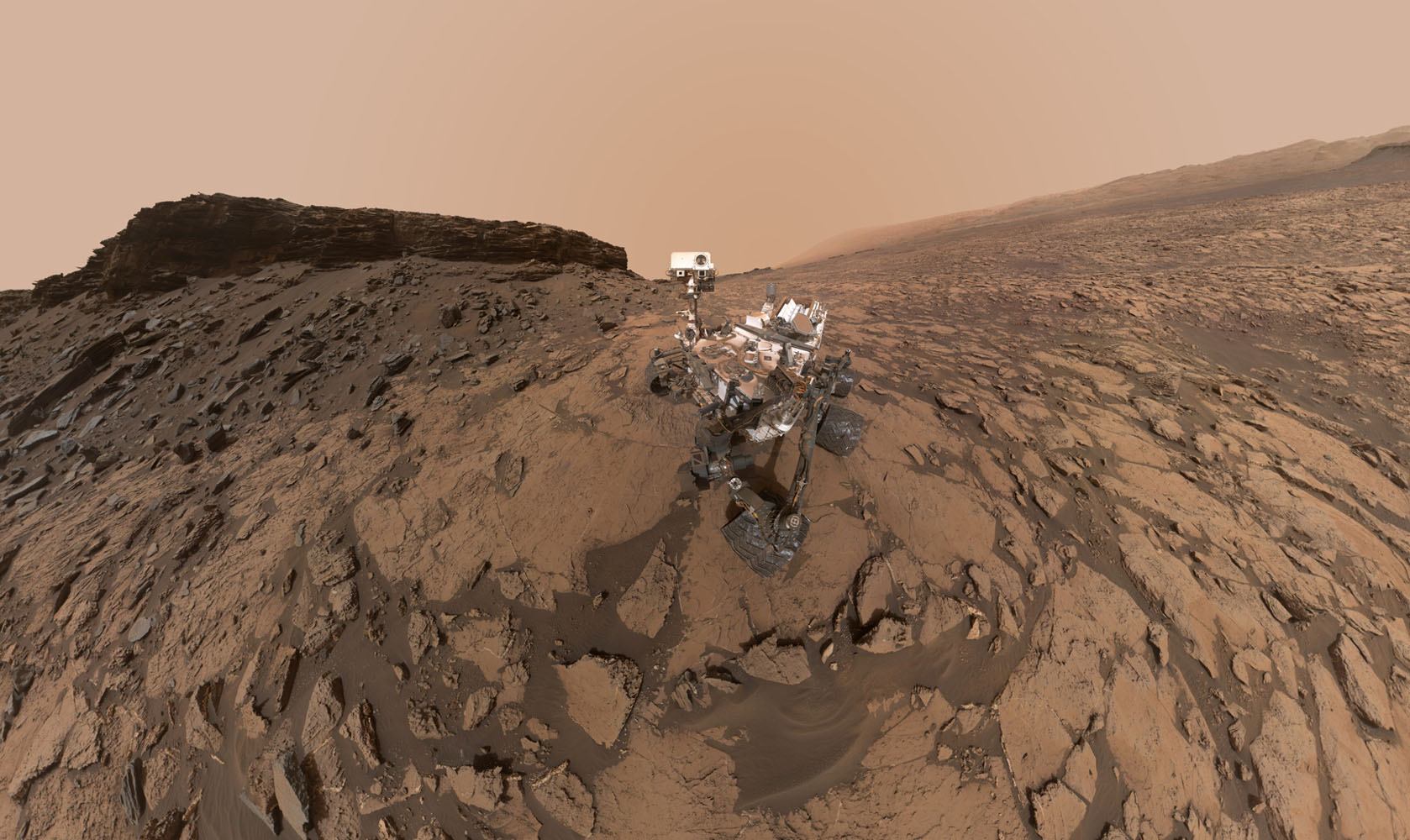
NASA's Curiosity rover has now been exploring Mars for nine years.
The car-sized robot launched in November 2011 and touched down inside Mars' 96-mile-wide (154 kilometers) Gale Crater on the night of Aug. 5, 2012. (The landing occurred on Aug. 6 Eastern time, but it was still Aug. 5 in California, where NASA's Jet Propulsion Laboratory, which manages Curiosity's mission, is based.)
Ever since, Curiosity has been helping scientists better understand Mars' past habitability and how the planet has changed over time. For example, the rover's observations have shown that Gale hosted a lake-and-stream system in the ancient past, which may have been capable of supporting Earth-like life for millions of years at a time.
Related: Amazing Mars photos by NASA's Curiosity rover
In September 2014, Curiosity reached the base of Mount Sharp, which rises 3.4 miles (5.5 km) into the Red Planet's sky from Gale's center. The six-wheeled robot then began picking its way up the broad, sloping massif, reading the rock layers as it climbed.
Embedded in those layers is a history of Mars' climate, which shifted over the eons from relatively warm and wet to cold and bone-dry. And Curiosity is now poised to gather data that could shed considerable light on this shift.
The rover has nearly reached a section of Mount Sharp rich in sulfate-bearing rocks, which are indicative of a relatively dry environment. The layers Curiosity has examined on the slopes thus far have generally harbored clays, which form in the presence of liquid water.
Get the Space.com Newsletter
Breaking space news, the latest updates on rocket launches, skywatching events and more!

Curiosity has made a number of other intriguing finds during its time on Mars. For example, it has discovered organic chemicals, the carbon-containing building blocks of life as we know it. And the rover has detected several spikes in the concentration of methane, which here on Earth is generated primarily by living creatures.
Methane can also be produced by abiotic processes, however, and the source of the gas in Gale Crater remains a mystery.
During its nine years on Mars, Curiosity has traveled a total of 16.14 miles (25.98 km). And its odometer could keep ticking over for a while to come. The rover is in good health despite its relatively advanced age, mission team members have said, and its nuclear power system is designed to operate for a minimum of 14 years. (All discussion of years in this story refers to Earth years. Mars years are longer, each one lasting about 687 Earth days.)
Curiosity isn't the only robot active on the Martian surface. NASA's InSight lander has been listening for Marsquakes since its November 2018 touchdown, and the agency's Perseverance rover landed this past February inside the 28-mile-wide (45 km) Jezero Crater.
Perseverance, which is modeled heavily on Curiosity, is hunting for signs of ancient Mars life and collecting samples for future return to Earth. Perseverance traveled to Mars with the 4-pound (1.8 kilograms) Ingenuity helicopter, which has made 10 flights (and counting) inside Jezero.
Then there's the Zhurong rover, which is part of Tianwen-1, China's first fully homegrown Mars mission. Zhurong landed on May 14, kicking off a surface mission designed to last at least three months.
Mike Wall is the author of "Out There" (Grand Central Publishing, 2018; illustrated by Karl Tate), a book about the search for alien life. Follow him on Twitter @michaeldwall. Follow us on Twitter @Spacedotcom or Facebook.
Join our Space Forums to keep talking space on the latest missions, night sky and more! And if you have a news tip, correction or comment, let us know at: community@space.com.

Michael Wall is a Senior Space Writer with Space.com and joined the team in 2010. He primarily covers exoplanets, spaceflight and military space, but has been known to dabble in the space art beat. His book about the search for alien life, "Out There," was published on Nov. 13, 2018. Before becoming a science writer, Michael worked as a herpetologist and wildlife biologist. He has a Ph.D. in evolutionary biology from the University of Sydney, Australia, a bachelor's degree from the University of Arizona, and a graduate certificate in science writing from the University of California, Santa Cruz. To find out what his latest project is, you can follow Michael on Twitter.









